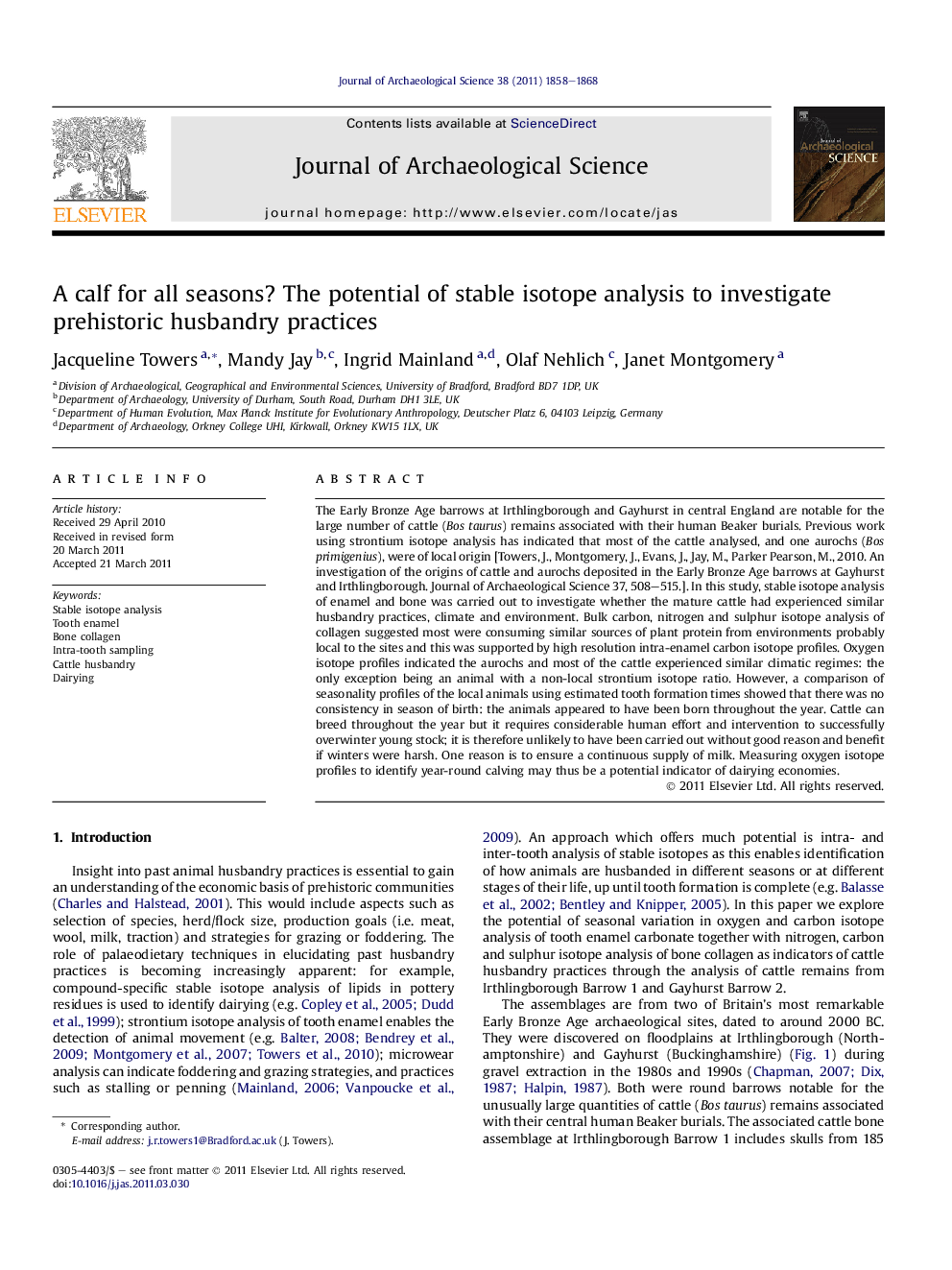| Article ID | Journal | Published Year | Pages | File Type |
|---|---|---|---|---|
| 1035817 | Journal of Archaeological Science | 2011 | 11 Pages |
The Early Bronze Age barrows at Irthlingborough and Gayhurst in central England are notable for the large number of cattle (Bos taurus) remains associated with their human Beaker burials. Previous work using strontium isotope analysis has indicated that most of the cattle analysed, and one aurochs (Bos primigenius), were of local origin [Towers, J., Montgomery, J., Evans, J., Jay, M., Parker Pearson, M., 2010. An investigation of the origins of cattle and aurochs deposited in the Early Bronze Age barrows at Gayhurst and Irthlingborough. Journal of Archaeological Science 37, 508–515.]. In this study, stable isotope analysis of enamel and bone was carried out to investigate whether the mature cattle had experienced similar husbandry practices, climate and environment. Bulk carbon, nitrogen and sulphur isotope analysis of collagen suggested most were consuming similar sources of plant protein from environments probably local to the sites and this was supported by high resolution intra-enamel carbon isotope profiles. Oxygen isotope profiles indicated the aurochs and most of the cattle experienced similar climatic regimes: the only exception being an animal with a non-local strontium isotope ratio. However, a comparison of seasonality profiles of the local animals using estimated tooth formation times showed that there was no consistency in season of birth: the animals appeared to have been born throughout the year. Cattle can breed throughout the year but it requires considerable human effort and intervention to successfully overwinter young stock; it is therefore unlikely to have been carried out without good reason and benefit if winters were harsh. One reason is to ensure a continuous supply of milk. Measuring oxygen isotope profiles to identify year-round calving may thus be a potential indicator of dairying economies.
► Multiple-isotope study of cattle remains from Early Bronze Age barrows in central England. ► Investigation of cattle husbandry practices, climate and environment. ► Oxygen isotope analysis suggests year-round calving. ► A continuous supply of milk may have been the impetus for the calving strategy.
